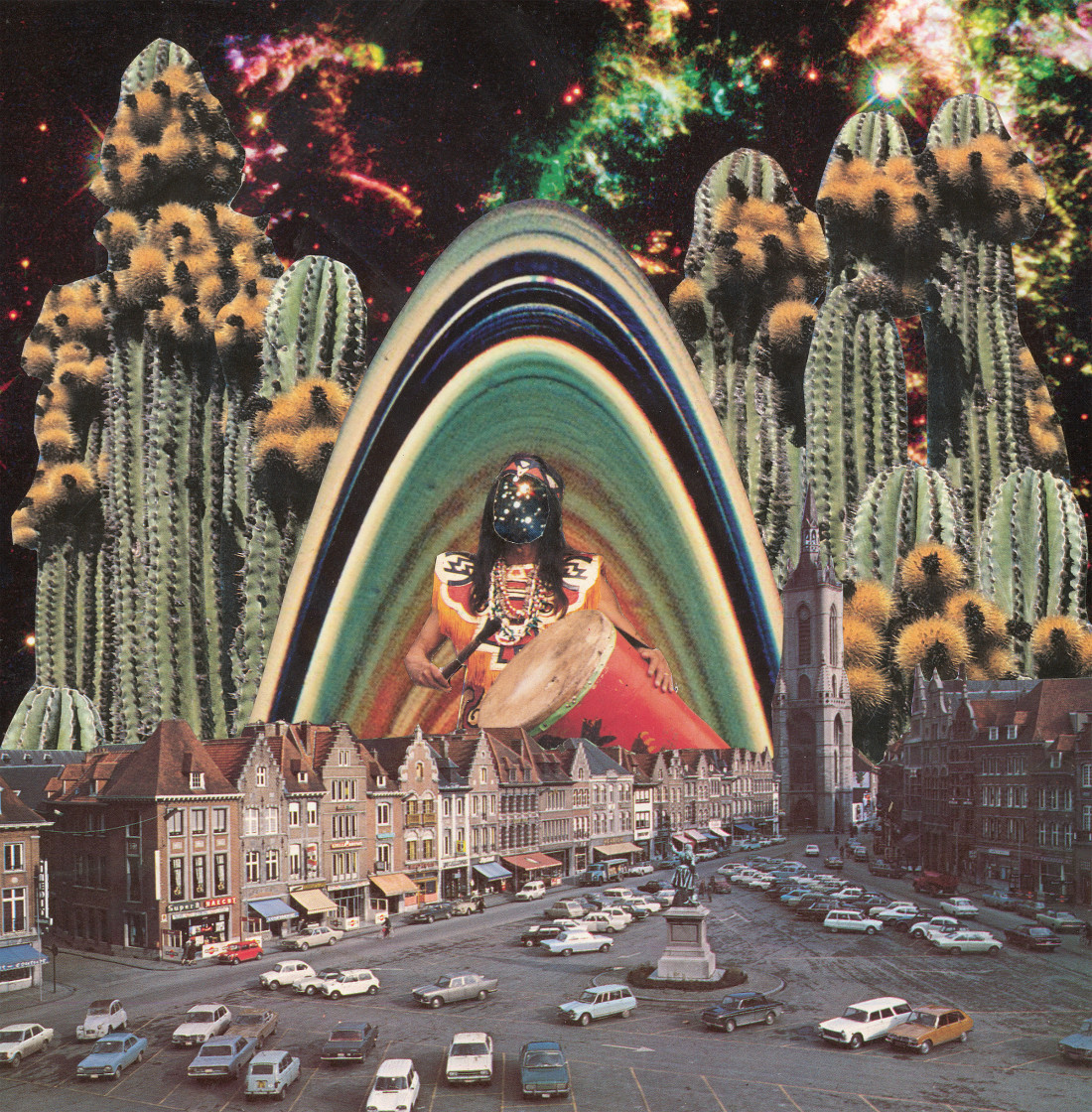Has a friendly neighborhood artist asked to borrow your sextant or GPS receiver in the past few weeks? If so, odds are good the request was for the Latitude & Longitude exhibition, which runs through Wednesday, Nov. 22, at the Asheville Area Arts Council.
Victor Palomino, curator of the exhibit and a participating artist, says the idea for the show was sparked by a desire to spotlight some of the diversity of the Asheville area and how artists with different points of view of the same geography see their shared region. Representing an array of skin colors, ages, genders and backgrounds, each of the 13 artists was asked to select two pieces completed in the past year and add the geographical coordinates of the place where the art was created.
“The idea of geography and our relation to the place we live is significant in this time when divisions are all around us,” Palomino says. “I want the viewers to remember that we are all in the same place, we share the same geography and together, little by little, we shape the culture of it.”
Among those formative forces is Ariana Dixon, whose coordinates are those of the house she lived in when she first moved from Florida to Asheville. “This was before I had a studio in the Phil Mechanic building,” she says. “I created [the works] in my room just because I didn’t know anybody in town and I lived on the top of a hill and I felt really introverted, so that’s where I just started pumping them out.”
Dixon’s mother was born and raised in Mexico City, while her father is from a diverse European background, including German, Irish, Polish and Norwegian ancestry. (“You can call me a mutt, which I’m so proud of,” she says.) Dixon has visited Mexico regularly since she was a child and developed close ties with her family there.
The investment in her heritage translates to her art through her search for magazines and informational books she finds around town, specifically images of ancient Aztec jewelry, scenery and pyramids. The clippings frequently teaches her facts she didn’t know about Aztec culture. With them, she creates art dedicated to her family history.
“I never want to forget where my roots are,” Dixon says. “A lot of my art represents the emotions I’m processing in the moment. It feels really good and grounding to be able to represent my culture in my art alongside my emotions because I feel like that definitely is a huge representation of who I’m growing to be — but to understand that the roots [are] the ground and foundation from where I’m growing.”
The coordinates added by Chris Corral align with that of his studio. “I’ve been all these places and I’m inspired by so, so much,” Corral says. “But the more I read into [the show’s intention], the more I realized it wasn’t about where you’ve been, per se, but where you’ve come to.”
Corral’s journey has involved a curiosity-filled exploration of his heritage and a gradual understanding of his scattered family history. A native of West Texas, his maternal grandfather was Yaqui Indian and, for the past several years until his passing a few months ago, was teaching Corral about that branch of his genealogy. Corral’s father’s side is considered mestizo, a term that means “mixed” — reflecting Spanish attempts to assimilate the native people of Mexico — and one about which Corral has mixed feelings.
“I have to question that: What does that mean? So, ultimately, I just take what I know, which is what’s in front of my face,” he says. “The main thing is, living in the United States, I can live in the moment. I can choose to be angry or hold grudges about all the negative things that have happened to the indigenous and people of color. … Or I can just focus on what I have going on right now.”
Among those positives are his family and work as the arts coordinator and Spanish teacher at Francine Delany New School for Children, which provides many opportunities to share his culture with students. The same openness is seen in his paintings, which makes frequent use of Day of the Dead skeletons, reflecting a celebration of life that connects the past, present and future.
Tying these artists’ work together is Palomino’s concept of using “the universal language of art as a way to create a safe space for questions and dialogue.”
“I love that,” Dixon says. “Art provokes and art evokes, and maybe it evokes something good or it evokes something bad, but whatever that even means, it evokes something and it’s something that I think is worth talking about.”
Corral concurs: “The whole point of a gallery is to share your visual works of art — and art in and of itself is a language. It’s … going to transcend actual verbal communication in the sense that it’s going to get a reaction.”
He continues, “You hope that … two people, who would seemingly never hang out, are going to come together and see a piece and find a connection.”
WHAT: Latitude & Longitude
WHERE: Asheville Area Arts Council, 207 Coxe Ave., ashevillearts.com
WHEN: Opening reception Friday, Nov. 3, 5-8 p.m. On view through Wednesday, Nov. 22




Before you comment
The comments section is here to provide a platform for civil dialogue on the issues we face together as a local community. Xpress is committed to offering this platform for all voices, but when the tone of the discussion gets nasty or strays off topic, we believe many people choose not to participate. Xpress editors are determined to moderate comments to ensure a constructive interchange is maintained. All comments judged not to be in keeping with the spirit of civil discourse will be removed and repeat violators will be banned. See here for our terms of service. Thank you for being part of this effort to promote respectful discussion.